Share
With this crummy economy, we’re all looking for ways to save money. One way to save a few bucks is doing your own auto maintenance. We’ve already discussed how to change your own oil. Today we’re going to tackle another maintenance job that you can easily do yourself.
If you’re not careful, your car’s tires can become a big money pit. Tires aren’t cheap. A new one can set you back at least $80. If you go through a new set of tires every year, you’re looking at dropping at least $400. Boo.
One simple way you can extend the life of your tires is regularly rotating them on your car. Tire rotation means changing where the individual tire is mounted on the car. Some men don’t ever have their tires rotated, and those that do usually let a quick lube take care of it. But this simple 15 minute job will set them back at least $20 at most places. Save yourself the money by doing it yourself. In today’s post we show you how.
Front and rear tires wear differently. For example, the front tires carry more than 60% of your car’s weight; consequently, front tires wear down faster than the rear ones. Also, turning wears the front tires at different rates. In America, we generally take left turns faster than we do right turns. This puts more load on the right front tire which results in the right tire wearing faster than your left. After thousands of miles of driving, you end up with uneven tread wear.
Rotating tires equalizes these natural wear patterns by changing the positions of your tires. By rotating your tires regularly, you’ll ensure yourself a smoother and safer ride. And more importantly (for me at least) you’ll save money in the long run by extending the life of your tires.
Oh, and it feels manly to flip tires around, too.
Check your car’s owner’s manual for the recommended tire rotation schedule. Most manufacturers recommend that you rotate your tires every 5,000 miles. An easy way to remember to rotate your tires is to do it whenever you change the oil on your car.
An easy way to remember to rotate your tires is to do it whenever you change the oil on your car.
Car jack. Using the jack that comes with your car can work, but it isn’t recommended for rotating your tires. It’s designed to lift up your car for a short amount of time so you can quickly change a tire. The safer route is to use a hydraulic floor jack. A good floor jack will set you back about $100, but your safety is well well worth the investment. A car jack will come in handy for other maintenance jobs as well.
Jack stands. You’ll need some jack stands so you can rest the car on top of them while you switch the tires out. You can buy a decent set of jack stands for about $30.
If you don’t want to fork over the dough, you can jerry rig a jack stand with a cinderblock and a two by four. Just place the cinderblock under a wheel and place the two by four on top of the cinderblock to prevent scratching the bottom of your car.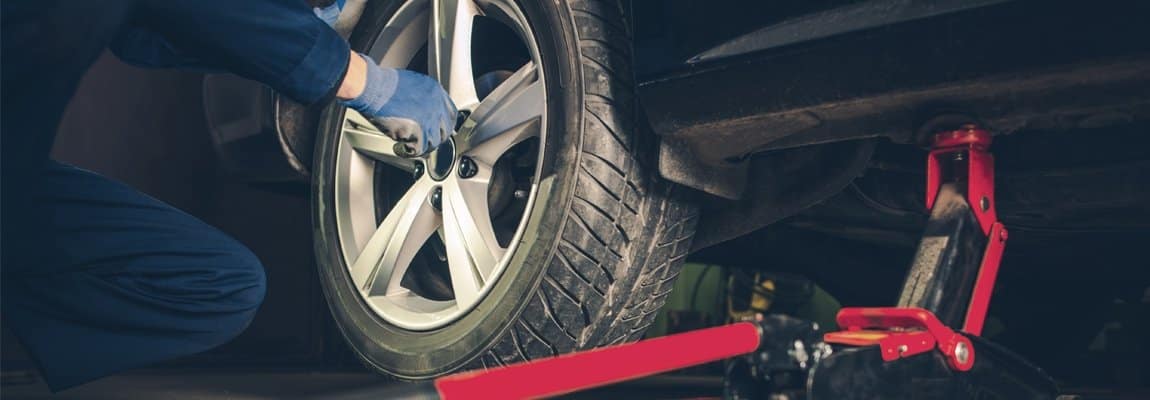 Lower the car jack so the car rests on the cinderblock and two by four. Wala! Instant jack stands!
Lower the car jack so the car rests on the cinderblock and two by four. Wala! Instant jack stands!
Before we start loosening those lug nuts, we need to know what pattern we’re going to use to rotate our tires. The way you rotate your tires depends on a few factors, the biggest one being whether your car has directional or non-directional tires.
How to Rotate Directional Tires. Directional tires have a “one-way” tread pattern that are optimized for the direction the tires rotate on the car, so they’re specifically made for either the left or right side. The grooves are angled to optimize handling, and they also do a good job of channeling water out from under the tire on wet surfaces, reducing hydroplaning and improving wet traction.
Little arrows or triangles on the sidewall indicate which way the tire is supposed to turn.
To rotate directional tires, just switch the front right tire for the back right tire, and the front left tire for the back left tire, like this:
How to Rotate Non-directional Tires. The tread pattern on non-directional tires is designed in such a way that the tire can be mounted on the wheel for any direction of rotation. So you can switch which side the tires are on when you rotate them.
The tread pattern on non-directional tires is designed in such a way that the tire can be mounted on the wheel for any direction of rotation. So you can switch which side the tires are on when you rotate them.
To rotate non-directional tires, use the cross pattern. For cars with rear-wheel drive, move the front tires to the opposite sides of the rear: left-front to right-rear and right-front to left-rear. The rear tires are moved straight forward. Here’s how it looks visually:
On vehicles with front-wheel drive, just do the opposite. Move the rear tires to the opposite sides of the front and move the front tires straight back.
Some old car maintenance guides recommend that drivers rotate their spare tire into use in order to give one of the tires a much needed break. The problem with this advice is that the vast majority of modern spare tires aren’t designed for extended driving. They’re often smaller and feature a lighter-weight construction and shallower tread depth.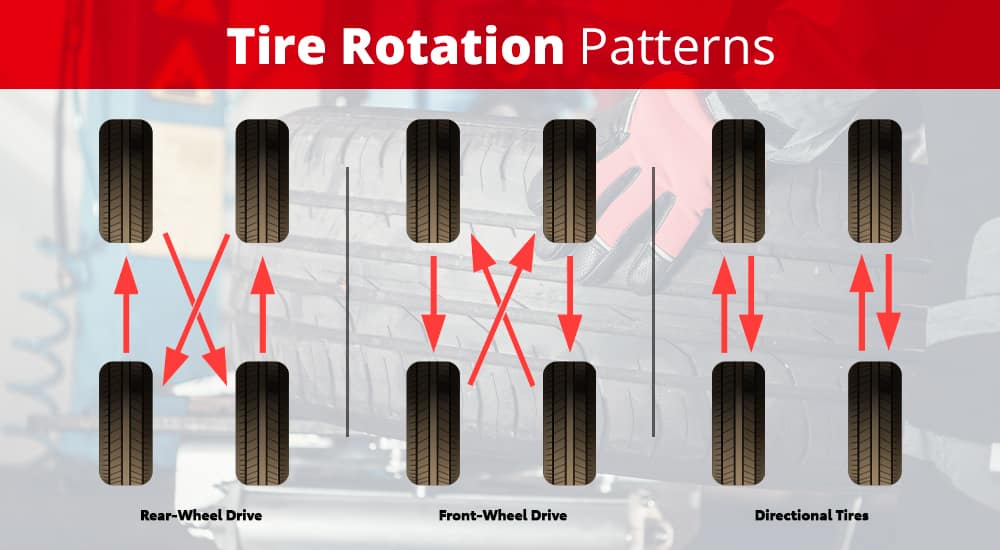 They’re designed to simply get you to a shop to fix the original tire. That’s it.
They’re designed to simply get you to a shop to fix the original tire. That’s it.
Some cars still come equipped with full-size matching spare tires. Off road vehicles and many SUVs usually have them. If you have a car that has a matching spare tire, it isn’t a bad idea to rotate it into use. Here’s a diagram for the suggested rotation:
Time needed: 20 minutes.
1. Engage parking brake. Just for your safety.
2. Loosen the lug nuts on all your wheels. You don’t want to take them completely off yet. Loosening them now will make unscrewing them when the car is elevated much easier.
3. Lift up one wheel with car jack and place jack stand underneath it. If you just have one or two jack stands (or cinder blocks) you’ll need to do a bit of mental work before you start jacking so you know how you’re going to proceed with lowering and raising your car. Because you have fewer stands, you’ll also spend more time lowering and raising your car in order to switch them out. Despite the extra effort, you still won’t spend much more than 20 minutes on the job. I’ve seen some people place their car on all four jack stands. It’s not exactly the safest thing to do, but it will definitely help you get the job done faster because you don’t have to switch out jack stands.
Despite the extra effort, you still won’t spend much more than 20 minutes on the job. I’ve seen some people place their car on all four jack stands. It’s not exactly the safest thing to do, but it will definitely help you get the job done faster because you don’t have to switch out jack stands.
4. Remove the tires and rotate them according to the appropriate pattern for your type of tires. When you place a tire back onto the wheel mount, screw the lug nuts on by hand as much as you can.
5. Lower the car from the jack stands. Take the lug wrench and tighten the nuts even more. It’s best to work the lug nuts diagonally from one to another. It looks like a star pattern. This ensures even tightening. Tightening the lug nuts unevenly can warp the brake rotor.
Star pattern when tightening lug nuts
That’s it! Now just mark down the mileage when you rotated your tires and remember to do it again in another 5,000 miles.
Tags: Cars
PreviousNextHow-To Guide
Posted on: September 17th, 2019
Taking off the lugs of the vehicle's tiresTo compensate for uneven wear and tear on your tires, regular tire rotation is important. Your front tires carry about 60% of your vehicle’s weight and are more likely to feel hard turns, therefore they wear out more quickly than your rear tires. By rotating your tires regularly, you will even out the tread wear that comes with daily driving and prolong the life of your tires. Generally, tires should be rotated every 5,000 miles; consult your owner’s manual to see if it provides a recommended tire rotation schedule.
Identify the possible rotation pattern for your vehicle, which will be based on the type of tires you have as well as whether your vehicle is front or rear wheel drive.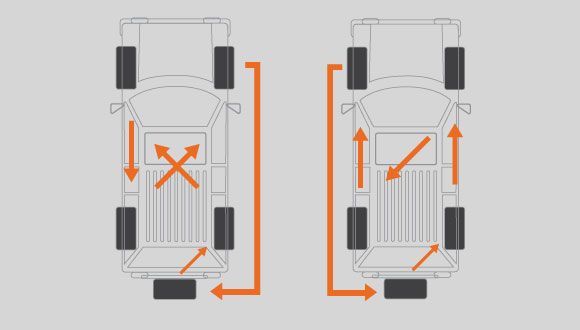
Loosen the lug nuts of all the wheels but don’t remove them yet.
Jack up your car and use jack stands to support the vehicle. Consult your owner’s manual to determine the proper placement of the jacks.
Remove the tires and rotate them according to the correct pattern for your tire type.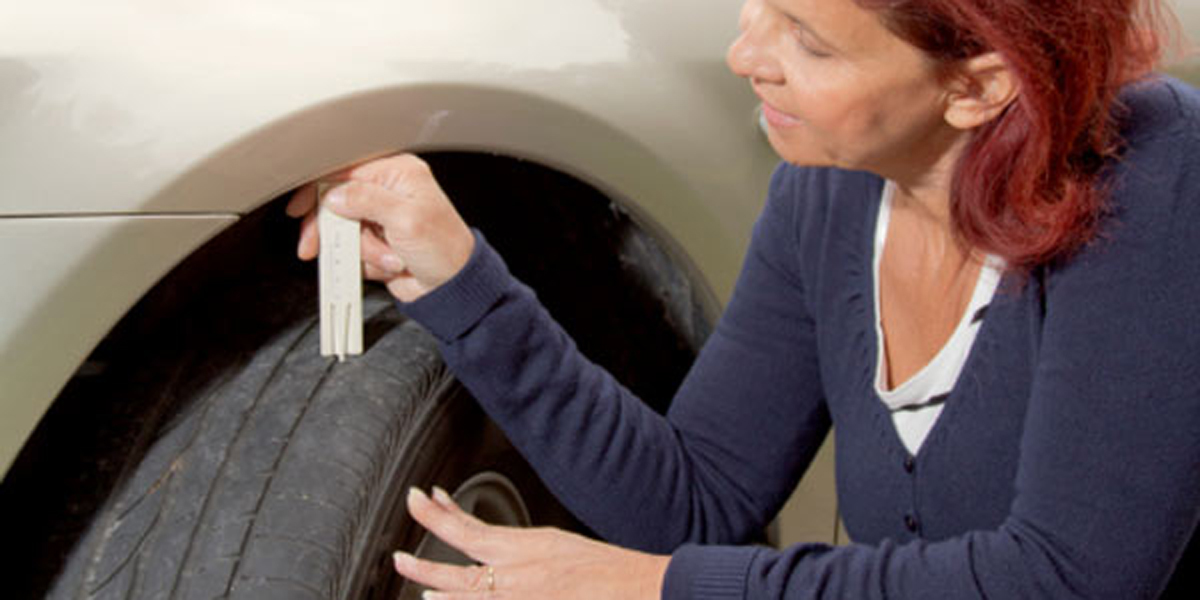
As you place each tire in its new position, screw in the lug nuts by hand as much as you can.
Raise up your vehicle using your jack and remove the jack stands. Then safely lower your car back down.
Finally, use the lug wrench to fully tighten the lug nuts of each tire. Tighten diagonally, in a star pattern to ensure even tightening. If you tighten them unevenly, you run the risk of warping the brake rotor.
Share This Article
Top Related Articles
More How-to Guides and Articles
With the onset of the new season, motorists have a question - how to properly store tires? Can I store them in the garage or on the balcony? What happens if the requirements are not met? We will tell you how to handle tires removed from the car.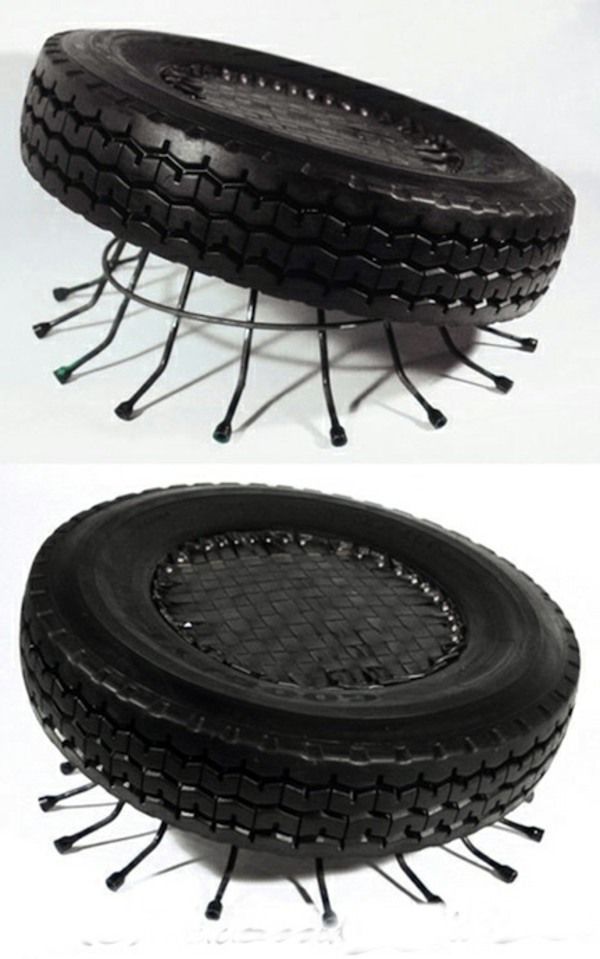
Tires are made of soft elastic material that is subject to deformation. In inappropriate conditions, they quickly lose their properties. If you have not learned how to properly store tires, you may experience such unpleasant consequences:
Don't risk your safety!
According to GOSTs, tires can be stored in a dry place, sheltered from precipitation, at a temperature of -30 to +40 C°. These requirements are met by garages, outbuildings, storerooms, glazed balconies and other similar premises.
Interested in how to store tires in winter? The main enemies in this case will be snow and water.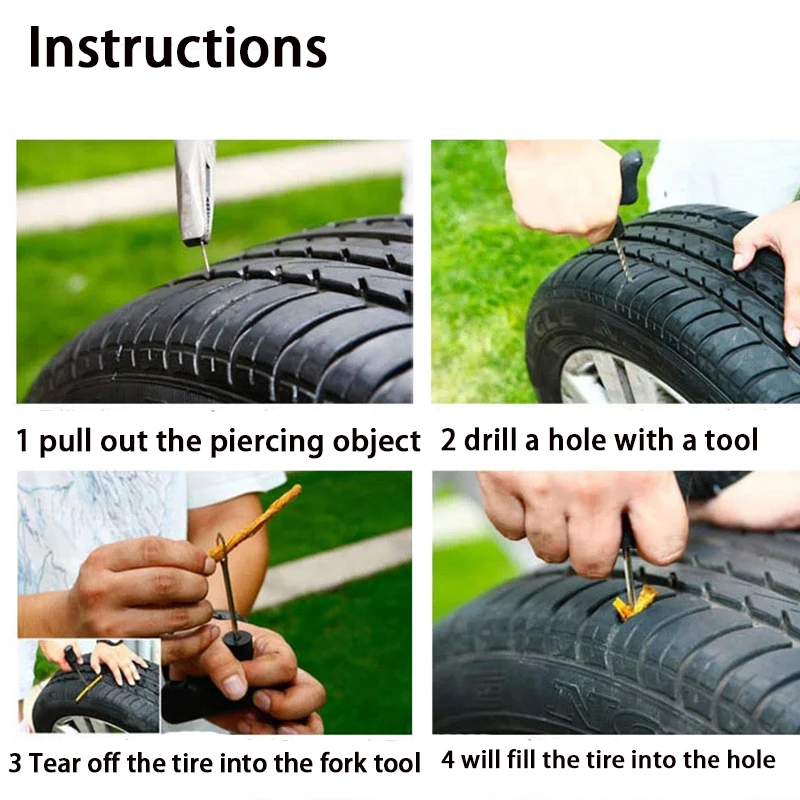 They can damage the tire by causing the sensitive material to warp. The same applies to discs that can be corroded. To maintain the properties of the tire in winter, good ventilation should be provided. It will be even better if you can organize heating.
They can damage the tire by causing the sensitive material to warp. The same applies to discs that can be corroded. To maintain the properties of the tire in winter, good ventilation should be provided. It will be even better if you can organize heating.
If you need to know how to store wheels in the summer, then you should pay attention to bright sunlight. UV radiation is also detrimental to tires: it deteriorates their properties, causing accelerated wear. Therefore, you should buy special covers made from natural materials. In order for the tires to remain elastic and durable after the end of the summer season, you need to periodically turn them or shift them, observing all the requirements.
If you don't have space to put your wheels in your garage or on your balcony, you can take your tires to a special warehouse. The advantages of such a solution are:
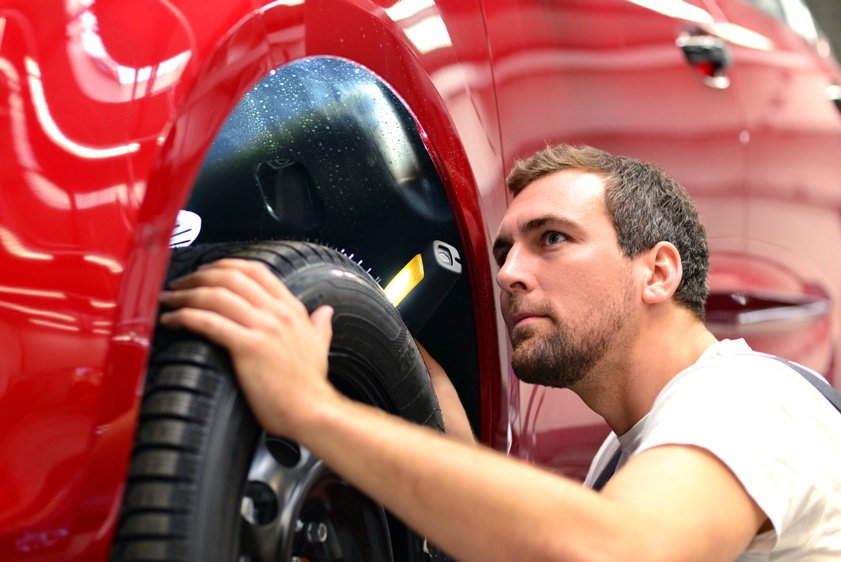
Properly storing tires is not difficult, but you need to do some preliminary preparation. Each tire should be thoroughly washed from dirt - adhering soil, asphalt particles and other substances can destroy the material. During this procedure, you can carefully inspect the surface of the wheel, finding cuts, punctures and other damage on it.
It is advisable to store tires on disks - in this case, they retain their original shape better. In addition, with the onset of the new season, you will save on the services of the service center. Each tire should be pre-treated with silicone grease. Do not confuse it with a color restorer that contains a solvent! In winter, the lubricant will prevent the formation of ice: it will fill the pores of the tire and push the water out of them. In the summer season, the composition forms a protective coating that will help prevent the elastic material from drying out.
To store summer tires, it is advisable to choose heated rooms. With a strong decrease in temperature, they can “suffocate”, covered with microscopic cracks. This is fraught with rapid stratification during high-speed driving and a complete loss of control. If there is no heating, you need to put the tires in a dry closed garage or shed where snow and water do not penetrate.
With a strong decrease in temperature, they can “suffocate”, covered with microscopic cracks. This is fraught with rapid stratification during high-speed driving and a complete loss of control. If there is no heating, you need to put the tires in a dry closed garage or shed where snow and water do not penetrate.
If summer tires are afraid of frost and moisture, then winter tires are afraid of ultraviolet radiation. When folding them on the balcony, be sure to cover the wheels with a piece of thick cloth. But do not forget to leave a couple of holes for ventilation so that moisture does not accumulate inside. It is undesirable to store winter tires without disks: in the warm season they become very soft and easily deformed. The consequences of such damage will be unpleasant and even dangerous.
Most motorists are wondering how to store tires on rims? We have already said above that this method helps to save time and money during the off-season “changing shoes”.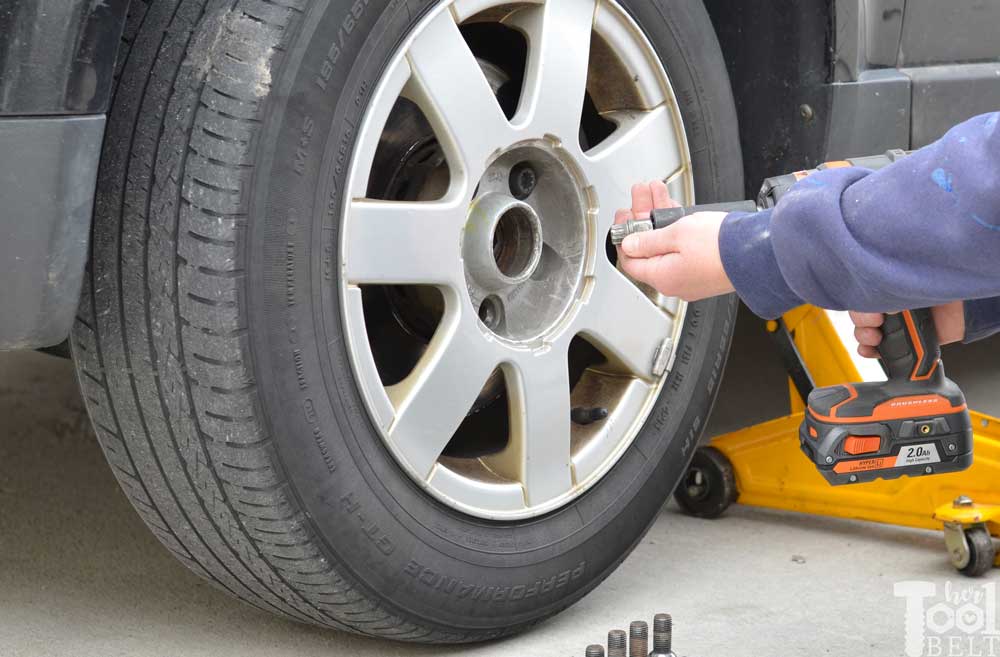 The ideal option for placing tires on rims is in limbo. To do this, you can install special brackets on the ceiling or in the wall. In this case, the main load is assumed by the metal rim - the soft part is not subjected to unnecessary loads.
The ideal option for placing tires on rims is in limbo. To do this, you can install special brackets on the ceiling or in the wall. In this case, the main load is assumed by the metal rim - the soft part is not subjected to unnecessary loads.
To know how to store wheels on rims, you also need to pay attention to pressure. The optimal indicator is from 1 to 1.5 atmospheres. At a lower value, the tires are at risk of squeezing, and at a higher value, bursting. Tires on steel or light alloy rims should be lowered before storage. In a specialized center, experienced employees will take care of this, but in the garage you will have to do it yourself.
What to do if there is no space for hanging tires on the rims? In this case, you can not put them vertically - if the pressure decreases, this will lead to deformation of the frame. It is best to stack tires in a pile, like a children's toy "pyramid". In this case, the following recommendations should be observed:

By knowing how to store your wheels on rims, you will save their properties, increase road safety and reduce your costs.
Many car owners have to store tires without wheels, a set of which is quite expensive. In this case, you will have to follow other recommendations. If you decide to store your tires without rims in your garage, never hang them from the ceiling or stack them. In both cases, the elastic material will be constantly subjected to excessive loads. This will lead to tire deformation, which we have already discussed earlier.
How to store tires without rims? To do this, install them vertically. In the absence of discs, this situation will be the only correct one. It will evenly distribute the load on the tire carcass. If you are interested in the question of how to store wheels without discs in the ideal case, you should know that they should be rotated periodically by 30–40 degrees. If possible, you should do this once every two weeks.
If possible, you should do this once every two weeks.
To store wheels without discs in the garage, you can buy special cases. They protect the surface of the tires from friction, UV exposure and moisture. Summer and all-season tires require special care in the cold season - be sure to treat them with silicone grease and put them in a dry place.
We told how to store summer and winter tires, what requirements must be observed with and without rims. So you will significantly reduce the cost of car maintenance, as well as make your trips really comfortable and safe.
Author: Aleksey Kokorin
Seasonal tire storage is not such a difficult task as it might seem.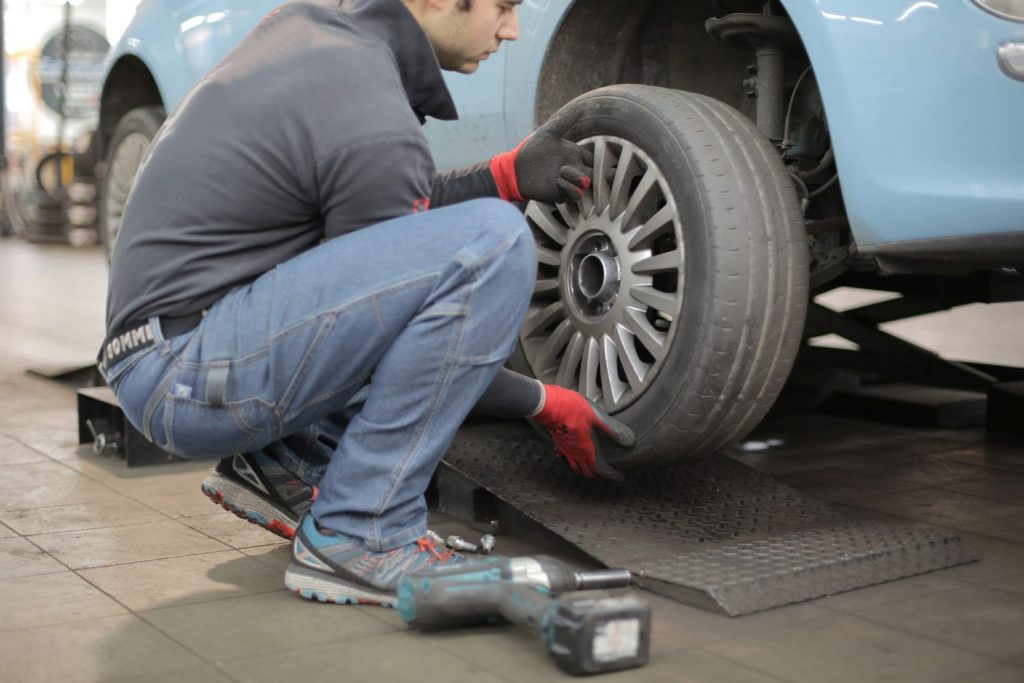 Nevertheless, there are some nuances here, both obvious and not so obvious. Let's see if it is possible to store tires in a garage or on a balcony, how to store tires complete with and without rims, and what are the advantages and disadvantages of seasonal tire storage services, and in the end we will collect all the tips in a handy infographic.
Nevertheless, there are some nuances here, both obvious and not so obvious. Let's see if it is possible to store tires in a garage or on a balcony, how to store tires complete with and without rims, and what are the advantages and disadvantages of seasonal tire storage services, and in the end we will collect all the tips in a handy infographic.
One of the most accessible and comprehensive guidelines for tire storage is the current GOST R 54266-2010 “Pneumatic tires. Packing, transportation and storage. First of all, it establishes the general conditions for storing tires - it does not talk about complete wheels, but the same is true for them. But the first condition, even before GOST, is the cleanliness of tires: before being sent for storage, tires and / or wheels must be washed to remove dirt, oil products and everything else that can adversely affect rubber.
Now to the storage conditions. According to GOST, storage rooms must be dry and ventilated.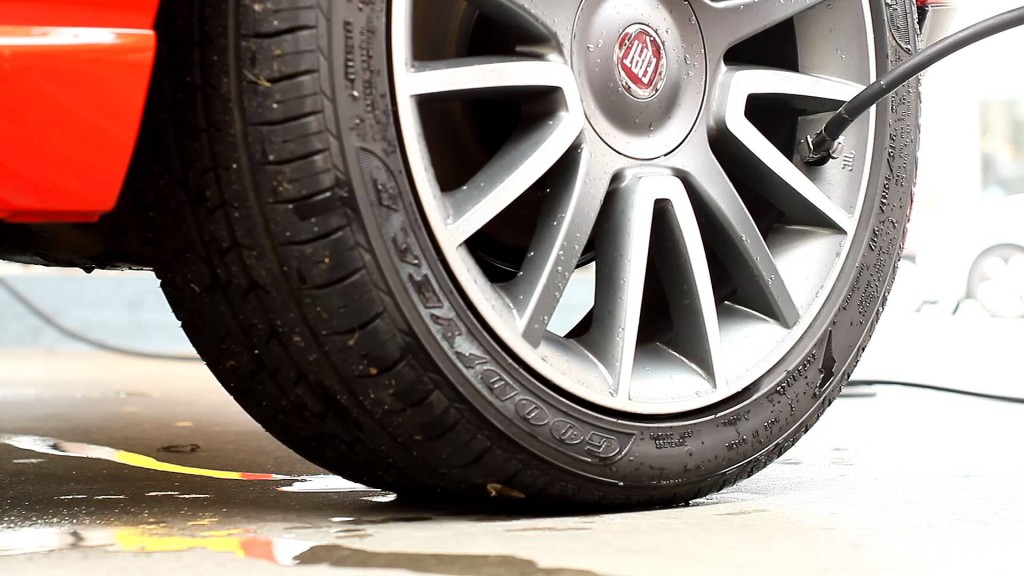 When storing tires, air temperature fluctuations from minus 30 °С to plus 35 °С are allowed. Tires must be stored at a distance of at least 1 m from heating devices. Thus, any dry garage or closed balcony is suitable for these conditions, where the tires will not lie next to the heating radiator. The main thing is to exclude sunlight from hitting the tires, since one of the enemies of the rubber compound is ultraviolet, which causes its aging. Well, tires also need to be protected from atmospheric precipitation.
When storing tires, air temperature fluctuations from minus 30 °С to plus 35 °С are allowed. Tires must be stored at a distance of at least 1 m from heating devices. Thus, any dry garage or closed balcony is suitable for these conditions, where the tires will not lie next to the heating radiator. The main thing is to exclude sunlight from hitting the tires, since one of the enemies of the rubber compound is ultraviolet, which causes its aging. Well, tires also need to be protected from atmospheric precipitation.
And one more condition concerns the place of storage. GOST recalls that when storing tubeless tires, conditions must be provided that exclude the deformation of the beads and side walls of the tires, and if they are stored on a rack, then its surface must be flat, without sharp edges.
Tire storage conditions are also contained in the above GOST. According to it, tires with a profile width up to 205 mm inclusive are stored in a horizontal position on top of each other in stacks no more than 2 m high, and with a profile width of 215 mm or more - in a vertical position (on the edge) in 1-4 rows.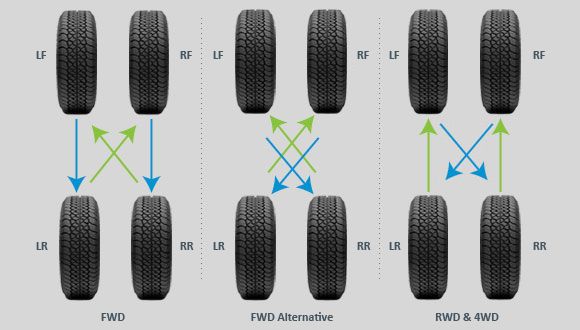 Most often, tires are generally advised to be stored exclusively vertically, regardless of dimension - largely because the tread is thicker and stiffer than the sidewall. However, in practice, a stack of 4 wheels is unlikely to cause sidewall deformation. Thus, tires without disks, subject to storage conditions, can be placed both vertically and horizontally - the main thing is to turn them (or shift them in a stack) at least once every 3 months. But it is impossible to hang tires without disks: this can lead to deformation of the shoulder area, which is adjacent to the disk and ensures the tightness of the wheel, and in this case the wheel can etch air.
Most often, tires are generally advised to be stored exclusively vertically, regardless of dimension - largely because the tread is thicker and stiffer than the sidewall. However, in practice, a stack of 4 wheels is unlikely to cause sidewall deformation. Thus, tires without disks, subject to storage conditions, can be placed both vertically and horizontally - the main thing is to turn them (or shift them in a stack) at least once every 3 months. But it is impossible to hang tires without disks: this can lead to deformation of the shoulder area, which is adjacent to the disk and ensures the tightness of the wheel, and in this case the wheel can etch air.
Reverse storage recommendations for wheel assemblies. Firstly, they can be suspended - a metal disc eliminates the possibility of any deformation of the wheel or tire. Secondly, they can be stored in stacks - however, the advice to shift the stack once every 3 months remains relevant. It is usually not recommended to store the wheels in an upright position - but this is mainly due to the fact that for storage it is better to reduce the pressure in them to 0.5-1 atmospheres to reduce internal stresses. Thus, a flat tire stored vertically will deform at the point of contact with the ground, which can affect its shape and balance afterwards. However, if you want to keep the wheel inflated, then you can put it upright - although it is still desirable to turn it all the same once every three months. So, let's recap: complete tires with discs can be suspended, stored horizontally in stacks, and if they are stored inflated, then vertically, but turning once every 3 months.
It is usually not recommended to store the wheels in an upright position - but this is mainly due to the fact that for storage it is better to reduce the pressure in them to 0.5-1 atmospheres to reduce internal stresses. Thus, a flat tire stored vertically will deform at the point of contact with the ground, which can affect its shape and balance afterwards. However, if you want to keep the wheel inflated, then you can put it upright - although it is still desirable to turn it all the same once every three months. So, let's recap: complete tires with discs can be suspended, stored horizontally in stacks, and if they are stored inflated, then vertically, but turning once every 3 months.
Now, having listed all the main recommendations, let's collect them into a single infographic. In order not to confuse you, we indicate undesirable storage methods as prohibited - but remember that 4 tires can be stacked if you are not too lazy to shift it, and assembled wheels can be stored vertically if you do not reduce pressure in them.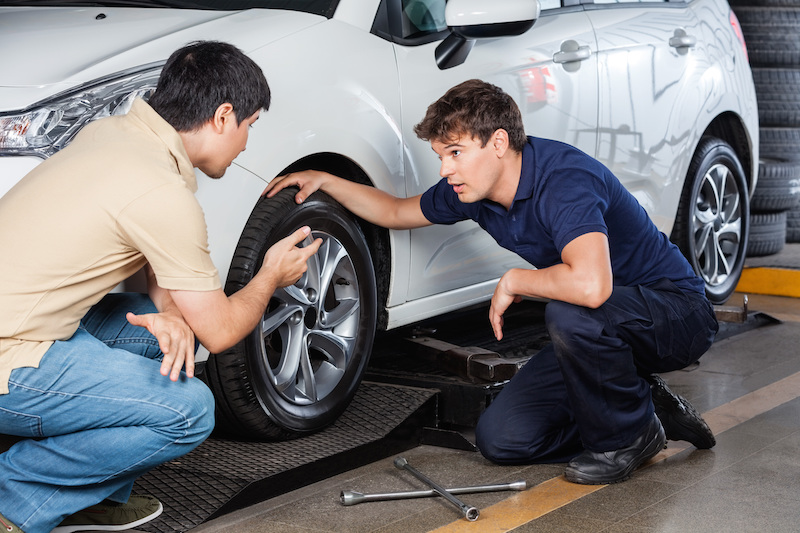
Seasonal tire storage services, or so-called "tire hotels", have gained some popularity. However, do not think that the storage conditions in them are strikingly different from the garage ones. Above, we have already found out that tires are very unpretentious to temperature and do not like only ultraviolet radiation and high humidity, so "tire hotels" are usually large hangars with sufficient ventilation. Therefore, the seasonal storage service is aimed primarily at those who have nowhere to place a replacement set of tires or wheels. Of the advantages, one can only mention washing, which is neglected by many car owners and which is usually offered in services before being stored. So if you don't have a garage and your balcony is occupied, perhaps a "tire hotel" would indeed be the best solution.
practice tires and wheels
Articles / Interesting 5 reasons to buy and not to buy Daewoo Matiz I Perhaps Matiz in Russia became the third car in terms of the number of ridicule after Zaporozhets and Oka. But are these caustic chuckles in the direction of a pretty car fair? Maybe it's just bra... 310 one 0 06.11.2022
But are these caustic chuckles in the direction of a pretty car fair? Maybe it's just bra... 310 one 0 06.11.2022
Articles / Supercars Scary, very scary: why the US banned drag on the Dodge Demon and other production cars Fast cars are bought in order to drive fast. And to drive as fast as possible, you need to drive in a straight line. These common truths are especially well understood in America - a country that, with ... 828 0 four 05.11.2022
Articles / Practice Frozen: why the car can not warm up for a long time "Winter! The peasant, triumphant…” warms up the car for half an hour. And sometimes not a peasant, but quite a boyar in an expensive car still warms it up, freezes and thinks: well, why is it so ... 1103 2 3 04.11.2022
Test drives / Test drive Haval Dargo vs Mitsubishi Outlander: the dog is barking, the stranger is coming In the Haval dealership in the south of Moscow, life is in full swing: buyers look at cars, communicate with managers and sign some papers. While I was waiting for the test Dargo, the same cross... 15330 7 205 13.09.2022
Test drives / Test drive Motor from Mercedes, emblem from Renault, assembly from Dacia: test drive of the European Logan 1.